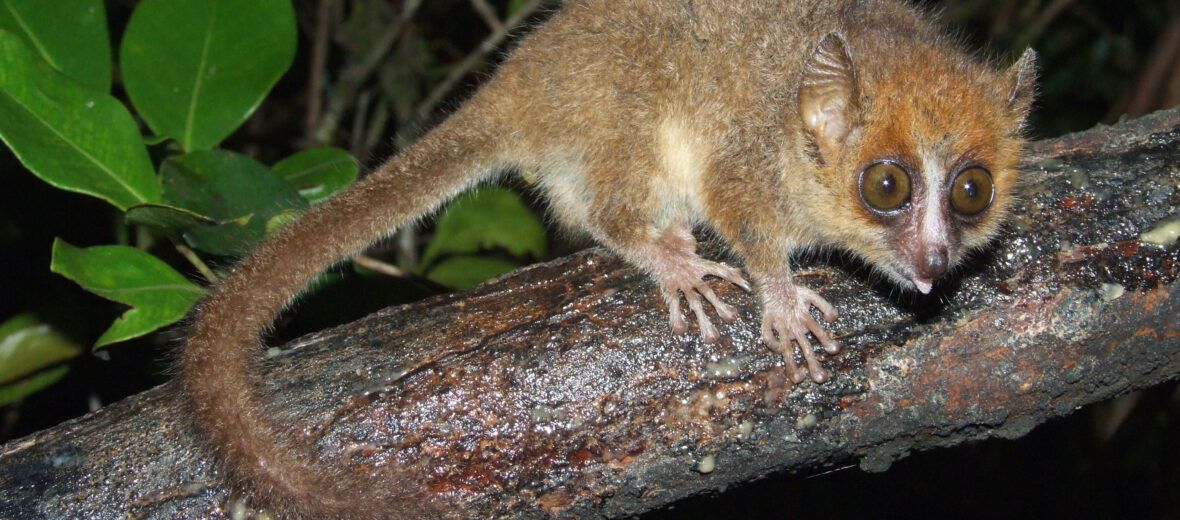
The gray mouse lemur is one of the smallest primates in the world; with the Madame Berthe’s mouse lemur being number 1. These critters are endemic to Madagascar. They prefer deciduous and spiny forests, secondary forests (including plantations), and semi-arid thorn scrub. Like all lemurs, they are primates; even though they look a little like a rodent. Mouse lemurs are the smallest known lemur species and the gray mouse is the largest of the lot. Habitat loss, due to deforestation and over collecting for the pet trade are their biggest threats. Fortunately, they are able to cope pretty well with habitat loss and can constantly adjust to changes. They are listed as Least Concern by the IUCN.
First the Stats…
Scientific name: Microcebus murinus
Weight: Up to 1.6 ounces
Length: Up to 11 inches, including their tail
Lifespan: Up to 13 years
Now on to the Facts!
1.) Gray mouse lemurs are nocturnal (active at night).
2.) These lemurs are arboreal (spend nearly all of their lives in trees).
3.) They typically undergo torpor (a state of physical or mental inactivity or lethargy) during Madagascar’s dry seasons.
4.) Mouse lemurs are omnivores (eat both plant and animal matter). They consume insects, small rodents, fruit, nuts, shoots, and nectar.
5.) The use of urine and feces to mark the borders of their territory is common in both male and female.
But wait, there’s more on the gray mouse lemur!
6.) They are preyed on by eagles, owls, snakes, and fossa.
7.) Gray mouse lemurs are polygynandrous (promiscuous), where both males and females have multiple partners.
Did you know…?
Just like humans, mouse lemurs can develop neurological disorders like that of Alzheimer’s disease and dementia.
8.) Mating season is from September – October.
9.) Gestation (pregnancy) lasts up to 60 days and yields 2 – 3 babies.
10.) Baby mouse lemurs spend up to 2 months dependent upon their mother’s milk. After that they venture out on their own to hunt and forage.
Now a Short Gray Mouse Lemur Video!
Also, check out the Critter Science YouTube channel. Videos added frequently!
Want to suggest a critter for me to write about? Let me know here.



